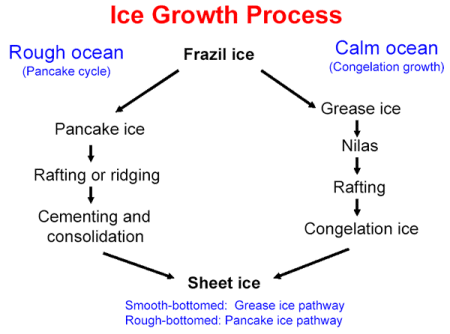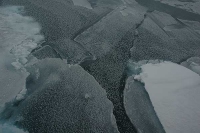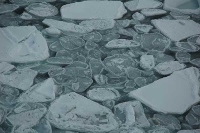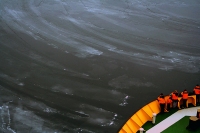5. Ice in the Arctic
How does sea ice form?
What happens when seawater freezes?
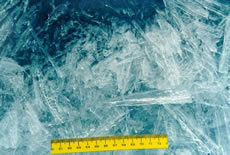
Source: NSIDC
Freshwater freezes at 0° Celsius, but the freezing point of seawater is lower, and depends on how much salt it contains. In polar regions, seawater begins to freeze at around -1.8° Celsius.
Small needle-like ice crystals called frazil are formed first. These crystals are pure ice, free of salt, and are typically 3 to 4 millimetres in diameter.
Frazil crystals float to the surface and eventually form sheets of sea ice.
In calm waters.....
a smooth, thin ice is formed which gives the water an oily appearance. This is known as grease ice which develops into a continuous thin sheet of ice, called a nilas. Nilas become lighter in colour as they thicken.
Currents or light winds often push the nilas around so that they slide over each other, a process known as rafting. Eventually, the ice thickens into a more stable sheet with a smooth bottom surface, called congelation ice.
But in rough seas...
slushy circular disks, called pancakes or pancake ice are formed. Rafting can occur, and if the ice is thick enough, ridging occurs: the sea ice piles on top of itself, forming lines of ridges on the surface and a corresponding structure, called a keel, on the underside of the ice.
Particularly in the Arctic, ridges up to 20 metres thick can form when thick ice deforms. Sheet ice formed from consolidated pancakes has a rough bottom surface.
Sea ice facts and figures are on the next page

